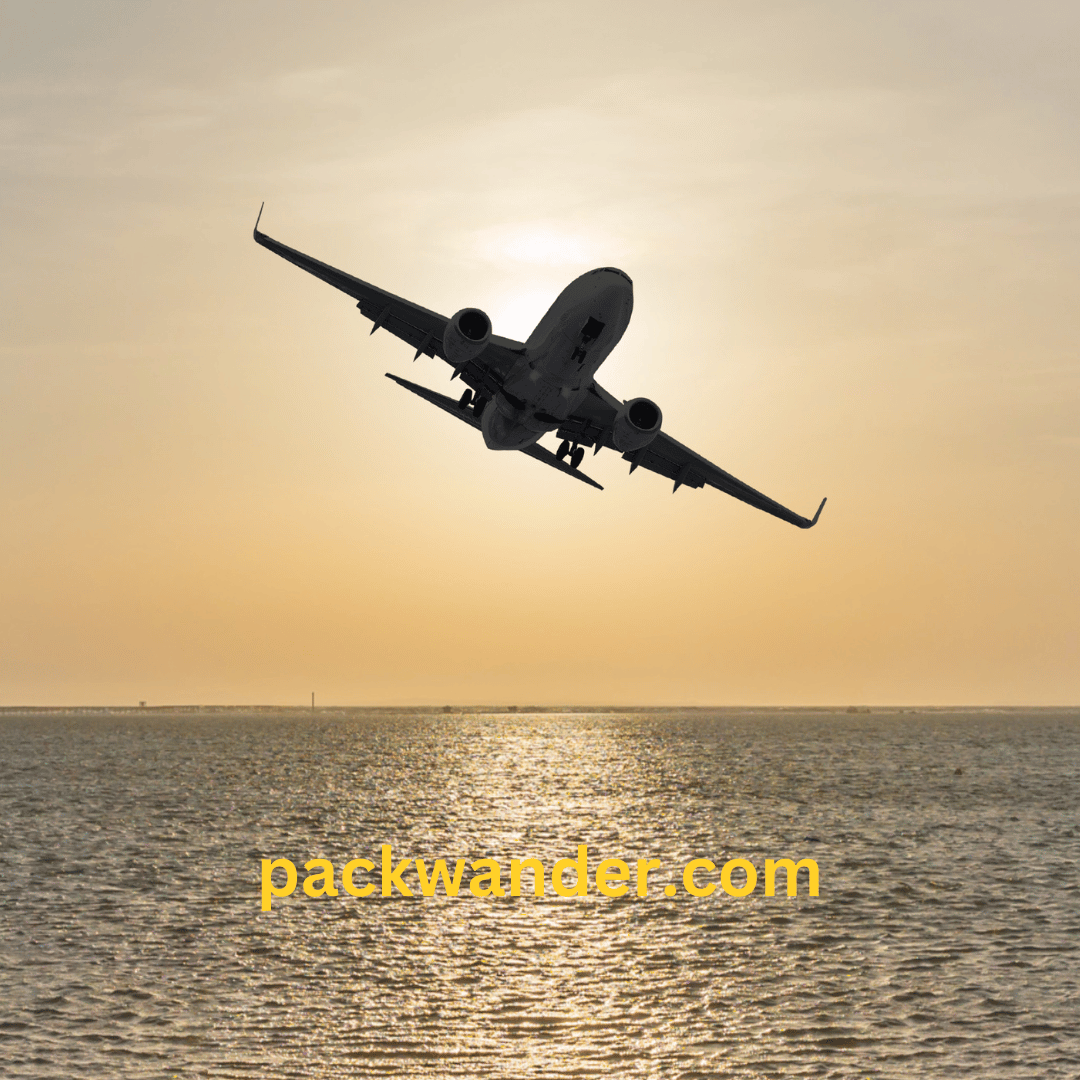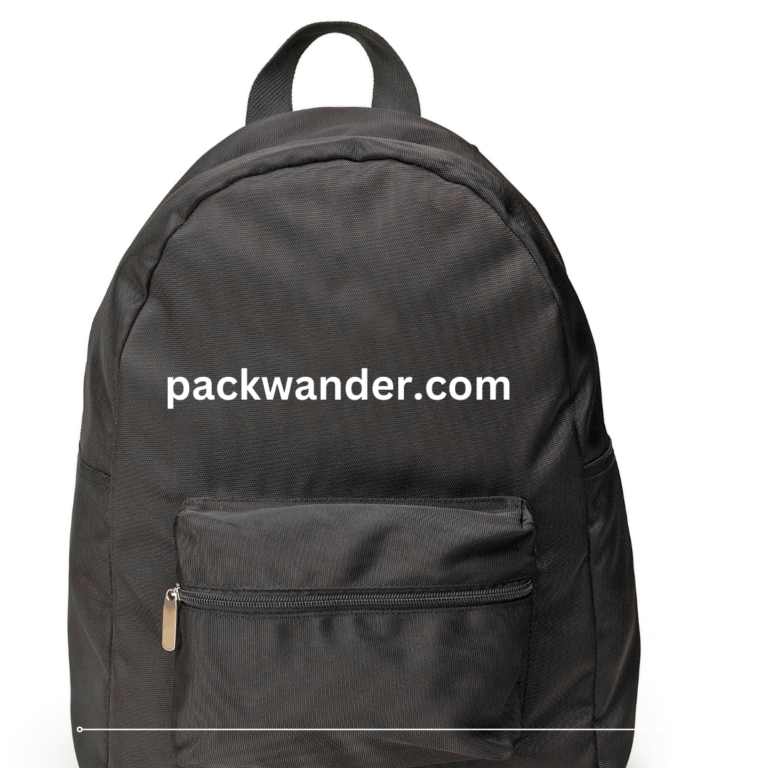How to Travel by Plane: A Comprehensive Guide for First-Time Flyers and Solo Travelers”
Introduction:
In this fast-paced world, where time is essential, “How to Travel by Plane” has become a preferred mode of transportation for many. The excitement of flying through the clouds and exploring new places can be overwhelming, especially for first-time flyers and solo travelers. But don’t worry, this guide is here to help you every step of the way, making your first flying experience smooth and enjoyable.
From booking your flight to landing in a new destination, we’ve got you covered. We’ll explain how to choose the right airline and pack your bags efficiently following the airline rules.
Navigating the airport might seem confusing, but we’ll guide you through check-in procedures, finding your boarding gate, and making the most of your time before takeoff.
If you feel anxious about flying, you’re not alone. We’ll share tips to calm your nerves and boost your confidence throughout the journey.
Venturing into international travel alone can be exciting yet challenging. We’ll provide essential tips for preparing your travel documents and embracing new cultures.
Safety is paramount, especially for female solo travelers. We’ll share empowering tips to ensure your well-being and security during your solo adventures.
Get inspired by heartwarming stories from fellow first-time flyers as they recount their memorable moments in the skies.
Make your flight enjoyable with practical tips for dealing with delays, staying entertained, and staying comfortable.
Remember, the journey is not just about reaching your destination; it’s about embracing every moment along the way. So, fasten your seatbelt and prepare for an adventure of a lifetime as we unravel the secrets of “How to Travel by Plane” for first-time flyers and solo travelers alike.
How to Travel by Plane

Flying by plane offers an exciting and efficient way to travel, allowing you to reach your desired destination quickly and comfortably. Whether you’re a first-time flyer or someone who has flown multiple times, knowing how to navigate the process can make your journey even more enjoyable. Here are some essential steps to follow when traveling by plane:
1. Booking your flight tickets: The first step in traveling by plane is to book your flight tickets. You can do this online through the airline’s website or various travel booking platforms. Compare prices, flight timings, and layover durations to find the best option that suits your preferences and budget.
2. Choosing the right airline: With numerous airlines operating across the globe, choosing the right one can significantly impact your travel experience. Consider factors such as reputation, safety records, in-flight services, and customer reviews when selecting the airline for your journey.
3. Selecting seats and cabin class: When booking your flight, you’ll have the option to choose your seats and cabin class. If you prefer more legroom and additional amenities, consider upgrading to business or first class. Otherwise, opt for economy class for a cost-effective option.
4. Understanding baggage policies: Each airline has its own baggage policies, including weight limits and restrictions on carry-on items. Familiarize yourself with these rules to avoid any inconvenience or additional charges at the airport. Pack your belongings accordingly and consider purchasing additional baggage allowance if needed.
5. Arriving at the airport early: On the day of your flight, arrive at the airport well in advance to allow ample time for check-in, security screening, and boarding. Aim to be at the airport at least 2 hours before domestic flights and 3 hours before international flights to avoid any last-minute rush.
6. Preparing travel documents: Ensure you have all the necessary travel documents, including your passport, visa (if required), and boarding pass. Keep them in a safe and easily accessible place to present at the various checkpoints.
7. Going through security checks: Airport security is an essential part of air travel. Be prepared to remove items such as belts, jackets, and electronic devices from your carry-on luggage during the screening process. Follow the instructions of the security personnel to ensure a smooth process.
8. Boarding the plane: Once your flight is ready for boarding, listen for announcements or check your boarding pass for the boarding gate and time. Board the plane according to the designated zones or rows to avoid congestion in the aisle.
Traveling by plane can be an exhilarating experience, and with proper preparation and knowledge of the process, you can make the most of your journey. By following these steps and being organized, you’ll be well on your way to an enjoyable and hassle-free flight.
Flying Tips for Beginners
Flying for the first time can be both exciting and nerve-wracking. To ensure a smooth and enjoyable journey, it’s essential to be well-prepared and aware of the necessary steps. Here are some flying tips for beginners:
1. Arriving at the airport early: Give yourself plenty of time at the airport before your flight. Arriving early allows you to check-in, go through security checks, and find your boarding gate without feeling rushed. It also helps you to avoid missing your flight due to unexpected delays.
2. Important travel documents to carry: Before heading to the airport, double-check that you have all your essential travel documents, including your passport, visa (if required), and any other identification required for your destination. Keep them in a secure and easily accessible place, like a travel wallet.
3. TSA security checks and regulations: Airport security is a crucial step in the flying process. Familiarize yourself with the Transportation Security Administration (TSA) guidelines to breeze through security checks smoothly. Remember to remove any liquids, laptops, and large electronic devices from your carry-on bag for separate screening.
4. What to pack in your carry-on bag: Your carry-on bag is your in-flight survival kit. Pack items such as a travel pillow, eye mask, earplugs, a lightweight blanket, and entertainment options like books, magazines, or electronic devices. Don’t forget to include any essential medications and travel-sized toiletries.
5. Staying comfortable during the flight: Wear comfortable clothing and choose layers, as cabin temperatures can vary. Consider packing a pair of warm socks and dressing in breathable fabrics. Regularly adjust your sitting position and take short walks around the cabin to prevent stiffness.
6. Hydration and dealing with jet lag: Staying hydrated during your flight is crucial, as the dry cabin air can cause dehydration. Drink plenty of water throughout the journey, and avoid excessive alcohol and caffeine consumption. To minimize jet lag, try to adjust your sleep schedule before the flight and stay awake during daylight hours at your destination.
7. Overcoming first-time flying anxiety: It’s normal to feel a bit anxious before your first flight. To ease your nerves, distract yourself with in-flight entertainment or relaxation techniques like deep breathing exercises. Trust that flying is a safe and routine mode of travel with experienced pilots and crew.
8. Embracing the adventure: Flying opens up a world of possibilities, allowing you to explore new destinations and experience different cultures. Embrace the adventure and excitement of your journey, and remember that the destination is worth the flight.
By following these flying tips for beginners, you can make your first-time flying experience more enjoyable and stress-free. Stay organized, be prepared, and most importantly, have fun as you embark on your travel adventure through the skies!
First-Time Flying: What to Do at the Airport
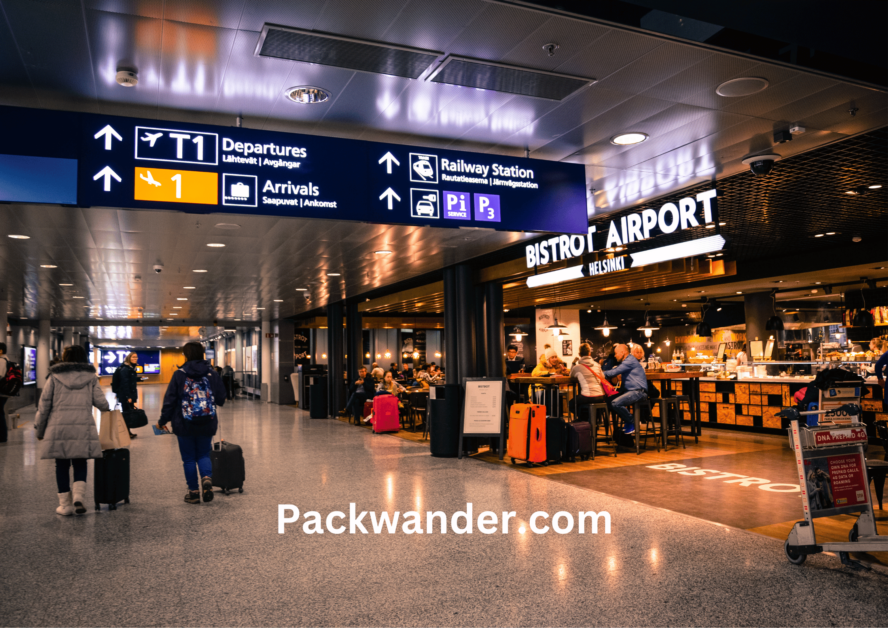
The airport can be a bustling and overwhelming place, especially for first-time flyers. However, with a bit of knowledge and preparation, navigating the airport becomes a breeze. Here’s a step-by-step guide on what to do at the airport:
1. Navigating the airport terminals: Airports can be large and complex, so it’s essential to familiarize yourself with the terminal layout. Most airports have clear signage and information desks to help you find your way. Check the airport’s website or mobile app beforehand to locate facilities such as restrooms, dining options, and lounges.
2. Checking in your luggage: If you have checked baggage, head to the airline’s check-in counter. Present your travel documents, such as your passport and flight reservation, to the airline staff. They will weigh your bags, tag them, and send them off to the aircraft. Remember to adhere to the airline’s baggage rules to avoid any additional fees.
3. Going through security and customs: After checking in, proceed to the security checkpoint. Be prepared to remove your shoes, belts, jackets, and place your carry-on items on the conveyor belt for X-ray screening. Follow the instructions of the security personnel and be patient with fellow travelers.
4. Finding your boarding gate: Once you clear security, check the departure boards to find your boarding gate. The gate number will be printed on your boarding pass. Some airports have multiple concourses, so make sure you know which one your flight departs from. Allow enough time to reach your gate, especially if it’s in a different terminal.
5. Preparing for boarding and takeoff: Boarding usually begins 30-45 minutes before the scheduled departure time. Listen for announcements or watch the display screens for boarding zone announcements. Have your boarding pass and identification ready for inspection at the gate. Once on the plane, locate your seat and stow your carry-on luggage in the overhead compartment or under the seat in front of you.
As the plane prepares for takeoff, follow the safety instructions provided by the flight attendants. Fasten your seatbelt, keep your seat in the upright position, and ensure that all electronic devices are in airplane mode. Take a moment to enjoy the thrill of takeoff and the feeling of soaring through the clouds.
By knowing what to do at the airport and staying organized, your first-time flying experience will be more relaxed and enjoyable.
Flying Alone for the First Time (International Travel)
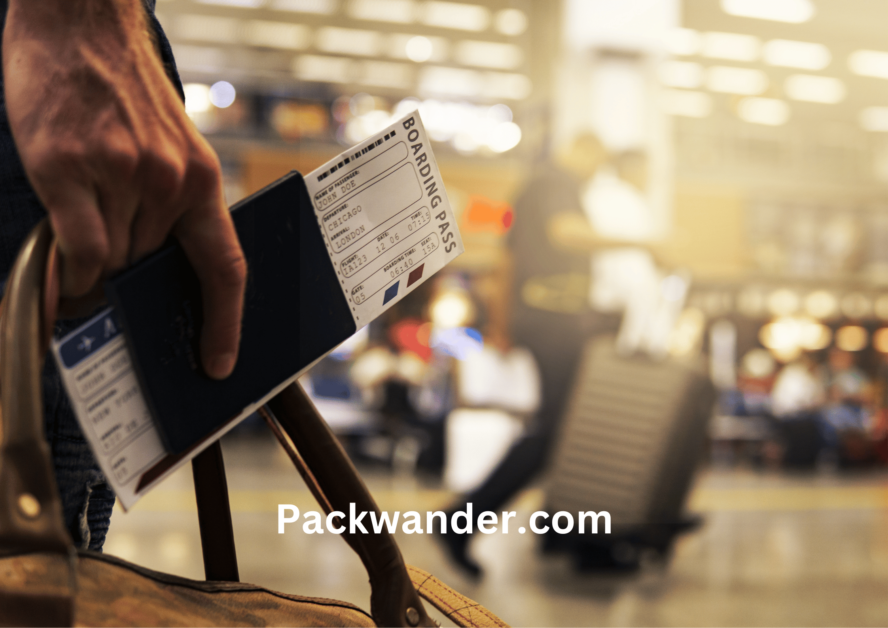
Embarking on an international journey alone can be a thrilling and transformative experience. However, it also comes with unique challenges, especially for first-time solo travelers. To make your international solo travel a success, here are essential tips to consider:
1. Preparing travel documents and visas: Before you fly, ensure that you have all the necessary travel documents in order. Check the visa requirements for your destination country and apply well in advance if needed. Make copies of your passport, visa, travel insurance, and other essential documents and keep them in a separate place from the originals for emergencies.
2. Researching your destination country: Knowledge is your best friend when traveling internationally. Research your destination thoroughly to understand its culture, customs, and local laws. Learn about the local transportation system, currency, emergency contact numbers, and popular tourist spots. Being well-informed will help you navigate your new surroundings with confidence.
3. Understanding cultural differences and customs: Embrace the diversity of the world by respecting and understanding different cultures and customs. Learn about appropriate behavior and dress codes in your destination country. Being culturally sensitive will help you make meaningful connections with locals and avoid unintentional misunderstandings.
4. Handling language barriers: Language barriers are common when traveling to foreign countries. Consider learning some basic phrases in the local language, such as greetings, thank you, and asking for help. Carry a phrasebook or use translation apps on your smartphone to facilitate communication. Additionally, be patient and use non-verbal cues when necessary.
5. Safety precautions: Safety is paramount when traveling alone internationally. Stay vigilant, especially in crowded areas and tourist spots. Avoid displaying valuables and keep your belongings secure at all times. Share your travel itinerary and accommodation details with a family member or friend back home, so they know your whereabouts.
6. Immersing yourself in the local culture: Solo travel offers a unique opportunity for personal growth and self-discovery. Embrace the experience by immersing yourself in the local culture. Try local cuisine, participate in cultural events, and interact with locals. Stepping out of your comfort zone can lead to unforgettable experiences.
7. Staying connected: Stay connected with family and friends back home through regular communication. Inform them of your travel plans and check in periodically to reassure them of your well-being. Having a support system back home can provide peace of mind during your solo journey.
8. Trusting your instincts: While exploring new territories can be exciting, always trust your instincts and prioritize your safety. If a situation feels uncomfortable or unsafe, remove yourself from it. Listen to your intuition and make informed decisions.
9. Traveling responsibly: As a solo traveler, you represent not only yourself but also your home country. Travel responsibly by respecting the local environment, culture, and communities. Be mindful of your impact and leave a positive impression on the places you visit.
Traveling alone internationally can be a life-changing experience filled with incredible adventures and personal growth. By preparing thoroughly, being culturally sensitive, and staying mindful of your surroundings, you’ll be well-equipped to navigate the world on your own terms.
Tips for Flying Alone as a Woman
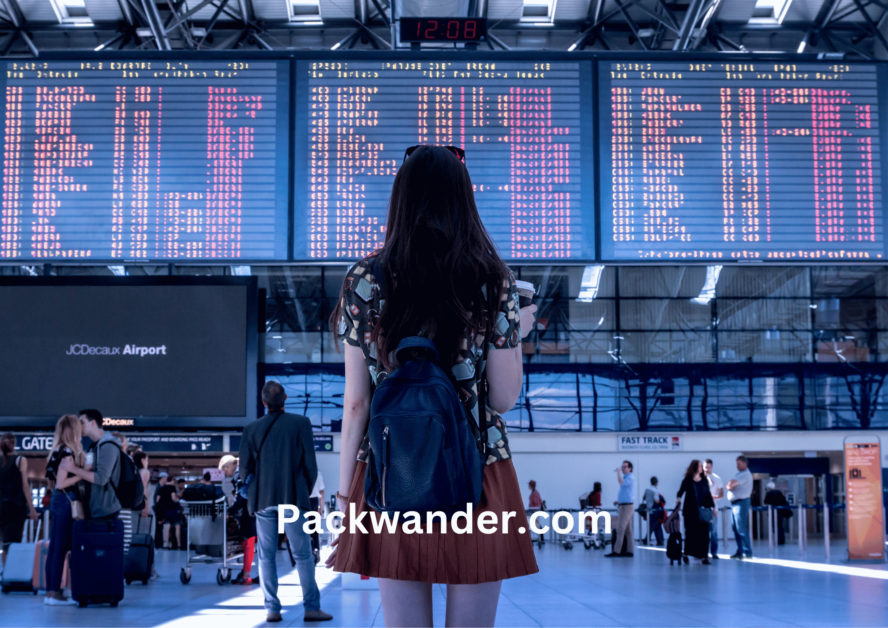
Flying alone as a woman can be an empowering and liberating experience, allowing you to explore new horizons with independence and confidence. To ensure a safe and enjoyable journey, here are some essential tips for female solo travelers:
1. Safety tips for female solo travelers: Prioritize your safety at all times. Keep your belongings close and avoid displaying valuable items. Be cautious with sharing personal information with strangers. Choose well-lit and populated areas when exploring new places, especially at night. Familiarize yourself with emergency numbers and the location of the nearest embassy or consulate in your destination.
2. Trusting your instincts and being aware of surroundings: Intuition is a powerful tool for any traveler. Trust your instincts and avoid situations that make you feel uncomfortable or unsafe. Be mindful of your surroundings and stay alert in unfamiliar environments. If something doesn’t feel right, remove yourself from the situation or seek assistance.
3. Choosing safe accommodation: Prioritize safety when selecting accommodation. Opt for reputable hotels, hostels, or guesthouses with positive reviews from other female travelers. Consider booking accommodations with 24-hour front desks and secure entry points. Request a room on higher floors and avoid ground-level rooms for added security.
4. Selecting safe transportation options: When using public transportation or ride-sharing services, share your trip details with a friend or family member. Choose licensed taxis or reputable ride-sharing companies with clear identification of drivers and vehicles. If possible, arrange transportation in advance through your accommodation.
5. Dressing appropriately: Respect the local culture and customs by dressing modestly, especially in conservative regions. Adapt your wardrobe to the local norms to avoid drawing unnecessary attention. Blend in with the local crowd to reduce the chances of standing out as a tourist.
6. Keep copies of important documents: Make copies of your passport, visa, travel insurance, and other essential documents. Store these copies separately from the originals. Additionally, take photos of important documents and store them securely in a cloud storage service for easy access.
7. Share your itinerary with a trusted contact: Inform a family member or a friend of your travel itinerary, including flight details, accommodation addresses, and contact numbers. Regularly update them about your whereabouts during your journey.
8. Avoid disclosing personal details: Be cautious about sharing personal information with strangers, especially on social media platforms. Avoid revealing details about your travel plans or sharing your exact location in real-time.
9. Stay confident and assertive: Confidence and assertiveness are key attributes for a solo female traveler. Carry yourself with poise, and if faced with unwanted attention or harassment, assertively express your boundaries and remove yourself from the situation if necessary.
10. Network with fellow travelers: Connect with other travelers, especially women, in your accommodations or through travel communities. Sharing experiences and advice with like-minded individuals can enhance your travel journey and create valuable connections.
Remember, traveling alone as a woman can be a rewarding and empowering experience. By prioritizing safety, trusting your instincts, and making informed decisions, you can embark on a memorable and transformative journey filled with remarkable adventures and personal growth.
Embracing Solo Travel
Solo travel is a liberating and empowering experience that allows you to discover the world on your terms. While traveling with others has its charm, there are unique advantages to embracing solo travel. Here are some compelling reasons to embark on a solo adventure:
1. Advantages of traveling alone:
- Freedom and Flexibility: Solo travel offers complete freedom and flexibility in your itinerary. You can go wherever you want, whenever you want, without the need to compromise on your preferences.
- Personal Growth: Solo travel provides opportunities for self-discovery and personal growth. Stepping out of your comfort zone and navigating new places independently can boost your self-confidence and resilience.
- Spontaneity: Solo travel allows you to be spontaneous. You can change your plans on a whim, explore hidden gems, and follow your instincts without having to consult with anyone else.
- Empowerment: Traveling alone empowers you to make decisions, solve problems, and overcome challenges on your own. It builds self-reliance and adaptability, valuable skills that translate to other areas of life.
- Introspection: Solo travel offers moments of solitude and introspection. It’s a chance to disconnect from the distractions of daily life and reflect on your thoughts and aspirations.
2. Connecting with fellow travelers and locals:
- Meeting Like-Minded Travelers: Solo travel does not mean being alone all the time. On the contrary, it often leads to meeting other solo travelers with similar interests and passions. Shared experiences create bonds and foster new friendships that can last a lifetime.
- Cultural Exchange: Traveling alone encourages interactions with locals, leading to meaningful cultural exchanges. Engaging with residents allows you to gain insights into their way of life and traditions.
- Openness to New Connections: Solo travelers are more approachable to others, making it easier to strike up conversations and form connections. Embrace the openness and embrace the opportunity to learn from diverse perspectives.
3. Building confidence and independence through solo travel:
- Overcoming Challenges: Navigating a foreign destination solo can be challenging, but successfully doing so boosts your confidence. Each hurdle you overcome becomes a testament to your ability to handle new situations.
- Decision-Making: Solo travel hones your decision-making skills as you must make choices about transportation, activities, and accommodations independently.
- Adapting to Change: Travel is unpredictable, and solo travelers learn to adapt quickly to unforeseen circumstances. This adaptability fosters resilience and resourcefulness.
- Taking Ownership of Experiences: Solo travel puts you in control of your journey. You take ownership of your experiences, creating a sense of empowerment and fulfillment.
Embracing solo travel opens the door to a world of self-discovery, new connections, and personal growth. The experiences gained from traveling alone enrich your life and contribute to your development as an individual. So, embrace the freedom, relish the adventure, and savor the joy of exploring the world on your own terms.
First-Time Flying Anxiety

For many first-time flyers, the thought of stepping onto an airplane can trigger feelings of anxiety and nervousness. It’s entirely normal to experience flying anxiety, as flying involves various uncertainties and new experiences. However, there are effective ways to cope with these fears and make your flying experience more comfortable. Here’s how to address first-time flying anxiety:
1. Understanding common fears and anxieties: Take comfort in knowing that you’re not alone in feeling anxious about flying. Common fears include fear of turbulence, fear of heights, fear of being in a confined space, and fear of the unknown. Recognizing these fears is the first step in addressing them.
2. Coping mechanisms for nervous flyers: There are several coping mechanisms that can help ease flying anxiety. One effective approach is gathering knowledge about flying and the safety measures airlines have in place. Understanding that flying is statistically one of the safest modes of transport can provide reassurance.
3. Breathing exercises and relaxation techniques: Practice deep breathing exercises and other relaxation techniques to calm your nerves during the flight. Breathing deeply and slowly can help regulate your heart rate and reduce feelings of anxiety. You can also try progressive muscle relaxation or mindfulness meditation to stay grounded.
4. Distractions and entertainment during the flight: Keep yourself distracted during the flight with various entertainment options. Bring a book, listen to calming music, or watch movies to divert your attention from any anxious thoughts. Engaging in enjoyable activities can make the flight more pleasant and pass the time quickly.
5. Seek support from flight attendants: Don’t hesitate to communicate your anxiety to the flight attendants. They are trained to handle nervous flyers and can provide reassurance and support throughout the flight. Knowing that there are professionals onboard to assist you can offer a sense of security.
6. Consider professional help: If your flying anxiety is severe and interferes with your travel plans, consider seeking help from a mental health professional. They can work with you to develop personalized strategies for managing your anxiety and phobias related to flying.
7. Visualization techniques: Practice positive visualization before and during the flight. Imagine yourself feeling calm and relaxed during the journey, arriving safely at your destination, and enjoying your travel experience. Visualizing positive outcomes can help counteract negative thoughts.
8. Join a fear of flying workshop: Some airlines and organizations offer fear of flying workshops designed to help nervous flyers overcome their anxiety. These workshops often include educational sessions and simulated flights to desensitize participants to flying-related stressors.
Remember that it’s okay to feel anxious about flying, especially if it’s your first time. Be kind to yourself, take things one step at a time, and don’t hesitate to seek support if needed. With the right coping techniques and a positive mindset, you can conquer your first-time flying anxiety and embrace the joy of exploring new horizons from the sky.
First Time Flight Experience
The excitement of embarking on your first-ever flight is a feeling like no other. The anticipation, the nerves, and the sense of adventure all come together to create a memorable experience that will stay with you for a lifetime. As a seasoned traveler, I vividly remember my own first-time flight and the range of emotions that accompanied it.
Sharing personal experiences of first-time flying:
As I stepped into the airport terminal, a mix of excitement and nervousness washed over me. The buzz of travelers and the sight of planes outside the window added to the anticipation. Checking in my luggage and receiving my boarding pass felt like a significant milestone. I remember the thrill of going through security, feeling like a seasoned traveler, even though it was my very first time.
As the boarding call was announced, I couldn’t help but feel a surge of excitement. Walking down the jet bridge, I marveled at the size of the aircraft, feeling a sense of wonder at the engineering marvel that would soon take me to the skies.
Highlighting challenges and lessons learned:
During my first flight, I encountered a few challenges that taught me valuable lessons. One of the significant challenges was dealing with the cramped legroom in economy class. It made me realize the importance of wearing comfortable clothing and stretching my legs during layovers.
I also learned the importance of planning ahead when it came to in-flight entertainment. While some airlines provided excellent options, others had limited choices, so I now always carry a book or download my favorite movies before the flight.
Memorable moments and surprises during the flight:
One of the most memorable moments was when the plane took off, and I felt the exhilarating sensation of ascending into the sky. The view from the window was breathtaking, and I couldn’t help but be captivated by the vast expanse below.
I was pleasantly surprised by the in-flight service provided by the cabin crew. Their warm smiles and helpful attitude made the journey much more comfortable. I also enjoyed striking up conversations with fellow passengers, discovering their travel stories, and realizing the universal love for exploring new places.
As the plane began its descent, I experienced the excitement of landing in a new city for the first time. The feeling of accomplishment and the knowledge that I had conquered my first flight filled me with a sense of pride.
Overall, my first-time flight experience was a perfect blend of excitement, challenges, and delightful surprises. It taught me to embrace the unknown, cherish the journey as much as the destination, and appreciate the wonders of air travel.
As you embark on your own first-time flight, remember to savor every moment, cherish the new experiences, and be open to the remarkable adventures that await you in the skies. Whether you’re traveling for leisure or business, the magic of flying will surely leave a lasting impression on your heart.
Tips for a Smooth and Enjoyable Flight
Flying can be an exciting and convenient way to travel, but it can also come with unexpected challenges. To ensure a smooth and enjoyable flight, consider these helpful tips:
1. Dealing with flight delays and cancellations: Flight delays and cancellations are common occurrences in air travel. To cope with these situations, stay informed by checking your flight status regularly before heading to the airport. Have a backup plan in case of delays, such as bringing a book, snacks, or entertainment to keep yourself occupied during the wait. If your flight is canceled, promptly contact the airline for rebooking options and assistance.
2. Making the most of in-flight entertainment: Many airlines offer a variety of in-flight entertainment options, from movies and TV shows to music and games. Bring your own headphones for better sound quality and compatibility with the airline’s entertainment system. Consider downloading content onto your personal device before the flight to ensure you have access to your favorite shows and movies, especially on flights without individual screens.
3. Tips for comfortable seating and sleeping: Choosing the right seat can significantly impact your comfort during the flight. If possible, select seats with extra legroom or near the emergency exits for more space. Consider investing in a neck pillow and an eye mask for better sleep during long flights. Adjust your seat to a comfortable position, wear comfortable clothing, and bring layers to adapt to changing cabin temperatures.
4. Staying healthy and refreshed during long flights: Long flights can take a toll on your body, but there are ways to stay healthy and refreshed:
- Stay hydrated by drinking plenty of water throughout the flight. Avoid excessive caffeine and alcohol, as they can contribute to dehydration.
- Move around regularly to prevent stiffness and promote circulation. Take short walks up and down the aisle or perform simple stretches in your seat.
- Practice good hand hygiene by using hand sanitizer or washing your hands regularly, especially before eating.
- Pack nutritious snacks like nuts, fruits, or granola bars to avoid relying solely on in-flight meals, which may not always cater to your preferences or dietary restrictions.
- Use a moisturizer and lip balm to combat the dry air in the cabin and keep your skin hydrated.
By following these tips, you can make the most of your flight experience and arrive at your destination feeling refreshed and ready to embark on your travel adventures. Remember to be flexible, stay positive, and embrace the journey as an integral part of your travel experience.
Additional Resources and Recommendations
Travel Apps and Websites:
- Skyscanner: A popular flight search engine that helps you find the best deals on flights, hotels, and car rentals.
- Booking.com: An excellent platform for booking accommodations worldwide, offering a wide range of options from hotels to apartments and hostels.
- TripAdvisor: A comprehensive platform for travel reviews, hotel bookings, and restaurant recommendations from fellow travelers.
- Google Maps: A reliable navigation app that provides directions, maps, and real-time traffic updates to help you explore new destinations.
- Duolingo: A language learning app that allows you to learn essential phrases and vocabulary in various languages for smoother communication during your travels.
Travel-Related Books and Documentaries:
- “Eat Pray Love” by Elizabeth Gilbert: A memoir of self-discovery as the author embarks on a journey of exploration through Italy, India, and Indonesia.
- “Wild” by Cheryl Strayed: A captivating memoir of a woman’s solo hike along the Pacific Crest Trail, delving into themes of self-discovery and healing.
- “Into the Wild” by Jon Krakauer: An inspiring true story of a young man’s solo journey into the Alaskan wilderness, seeking adventure and spiritual fulfillment.
- “An Idiot Abroad” (TV Series): A hilarious documentary series featuring comedian Karl Pilkington as he embarks on humorous and eye-opening travels to various destinations around the world.
Useful Travel Guides and Resources:
- Lonely Planet: A renowned travel guide publisher providing comprehensive guides, tips, and recommendations for various destinations.
- Rick Steves’ Europe: A travel resource offering expert advice, travel tips, and cultural insights for exploring Europe.
- National Geographic Travel: A wealth of travel inspiration, photography, and articles on destinations around the world.
- CIA World Factbook: A valuable resource providing information on the geography, people, government, economy, and more of countries worldwide.
- World Health Organization (WHO) Travel Advice: Provides health-related travel advice and recommendations, including vaccinations and disease outbreaks, for international travelers.
These resources and recommendations can be valuable companions on your travel journey, helping you plan, navigate, and immerse yourself in the wonders of new destinations. Remember to always cross-check information, stay up-to-date with travel advisories, and embrace the joy of exploring the world with curiosity and an open mind.
Flying with Children: Tips and Considerations
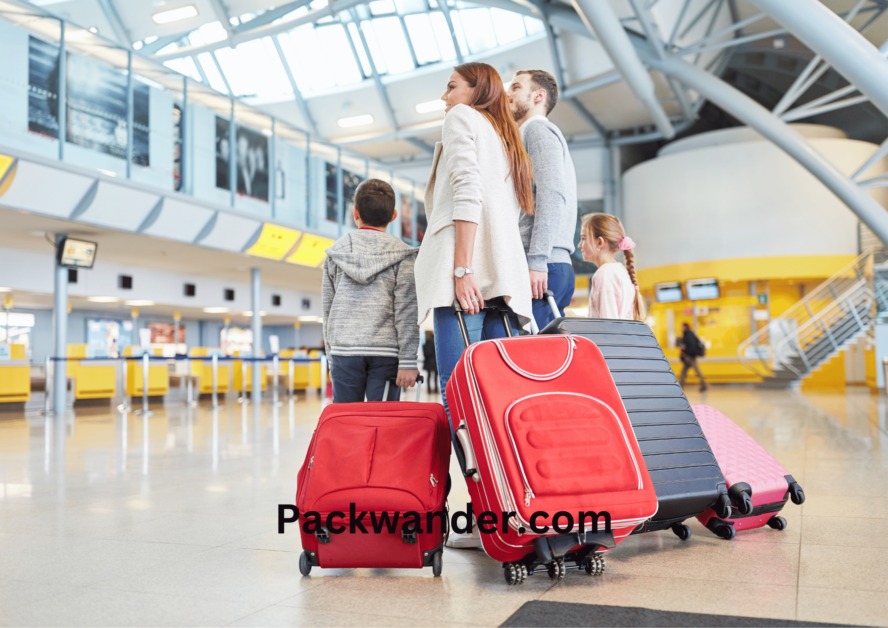
Flying with children can be a rewarding experience, but it also requires careful planning and preparation to ensure a smooth and enjoyable journey. Here are some valuable tips and considerations for family travel:
1. Planning ahead for family travel:
- Book Direct Flights: Whenever possible, choose direct flights to minimize layovers and reduce travel time, especially for young children.
- Choose Kid-Friendly Airlines: Research airlines known for their family-friendly services, such as priority boarding for families, child meals, and entertainment options.
- Notify the Airline: Inform the airline about any special needs or requirements your child may have, such as a bassinet for infants or a child seat for toddlers.
- Seat Assignments: Choose seats in advance to ensure that your family can sit together. Many airlines allow families with young children to pre-select seats at no extra cost.
2. Packing essentials for kids during the flight:
- Comfort Items: Pack your child’s favorite blanket, stuffed toy, or pillow for comfort and familiarity during the flight.
- Snacks: Bring a variety of snacks that your child enjoys. Opt for healthy options and avoid snacks that may cause spills or excessive mess.
- Extra Clothing: Pack an extra set of clothes for your child, as well as a change of clothes for yourself, in case of spills or accidents.
- Entertainment: Bring books, coloring books, toys, or electronic devices with headphones to keep your child entertained during the flight.
- Medication and First Aid: Carry essential medications, such as pain relievers or motion sickness remedies, as well as a basic first-aid kit.
3. Keeping children entertained on long flights:
- Electronic Devices: Tablets or smartphones loaded with age-appropriate games, movies, or educational apps can be a lifesaver during long flights.
- In-Flight Entertainment: Take advantage of the airline’s in-flight entertainment system. Many airlines offer a selection of children’s movies and TV shows.
- Activity Packs: Prepare activity packs with coloring books, stickers, and small games to keep children engaged.
- Interactive Games: Play interactive games with your child, such as “I Spy” or storytelling, to pass the time.
- Walk and Stretch Breaks: Encourage your child to take short walks or stretch breaks in the aisle, if possible, to prevent restlessness.
- Engage in Onboard Activities: Some airlines organize in-flight activities for kids, so keep an eye out for any special events.
4. Be Flexible and Patient:
- Be prepared for the unexpected and remain flexible in case of flight delays or disruptions.
- Stay calm and patient if your child becomes restless or fussy during the flight. Remember that flying can be overwhelming for young children.
- Take breaks when needed, and try to make the journey as enjoyable as possible for your child.
With proper planning and consideration, flying with children can be a pleasant and memorable experience. Keep your child’s needs in mind, stay organized, and embrace the adventure of traveling together as a family.
Traveling with Pets: Flying Safely with Your Furry Friends

Taking your beloved pet on a flight can be a wonderful experience, but it requires careful preparation and attention to ensure their safety and comfort. Here are essential tips for flying with pets:
1. Pet travel regulations and requirements:
- Check Airline Policies: Each airline has specific pet travel policies and regulations. Review these guidelines, including pet size and weight restrictions, pet carrier specifications, and any required documentation.
- Health Check and Vaccinations: Ensure your pet is in good health and up-to-date on vaccinations. Some airlines may require a health certificate issued by a veterinarian within a certain timeframe before travel.
- Microchipping and ID Tags: Microchip your pet and attach visible ID tags with your contact information, including your destination address.
- Check Destination Rules: Research and comply with the pet entry requirements of your destination, including quarantine regulations if applicable.
2. Preparing a comfortable pet carrier for the journey:
- Airlines Approved Carrier: Use an airline-approved pet carrier that meets the size and safety requirements of the airline. The carrier should provide enough space for your pet to stand, turn around, and lie down comfortably.
- Familiarize Your Pet: Introduce your pet to the carrier in the weeks leading up to the flight. Make it a positive experience by leaving treats, toys, and bedding inside.
- Ventilation and Comfort: Ensure the carrier has proper ventilation and is lined with soft bedding or a familiar blanket for added comfort.
- Leak-Proof and Secure: Make sure the carrier is leak-proof and securely fastened to prevent any accidental escapes during transit.
3. Tips for reducing pet travel stress:
- Visit the Vet: Schedule a visit to the veterinarian before the trip to ensure your pet is healthy and fit for travel. Discuss anxiety-relief strategies if your pet experiences stress during travel.
- Exercise Before the Flight: Allow your pet to exercise and play before the flight to help them burn off excess energy.
- Avoid Sedation: It’s generally not recommended to sedate pets for air travel, as it can affect their respiratory system. Consult with your vet if you’re considering sedation.
- Familiar Items: Bring along familiar items, such as their favorite toy or blanket, to provide comfort and a sense of familiarity during the journey.
- Stay Calm: Pets can sense their owner’s emotions. Stay calm and reassuring to help your pet feel safe and secure.
- Avoid Feeding Before the Flight: Avoid feeding your pet a large meal right before the flight to reduce the risk of motion sickness.
- Keep Hydrated: Offer water to your pet before and during the flight, but avoid overhydration to minimize the need for bathroom breaks.
Flying with your pet requires thoughtful planning and consideration, but with proper preparation, it can be a positive experience for both you and your furry companion. Remember to prioritize their safety and well-being throughout the journey, and enjoy making cherished memories together as you explore new destinations.
Dealing with In-Flight Turbulence
In-flight turbulence is a common occurrence during air travel, and while it can be unsettling, it is generally a normal and safe part of flying. Here’s what you need to know about turbulence and how to stay calm during bumpy flights:
1. Understanding turbulence and its safety:
- What is turbulence: Turbulence is the irregular and bumpy movement of the aircraft caused by changes in air currents. It can range from mild to severe and is most common during takeoff, landing, and when flying through certain weather conditions.
- Safety of turbulence: Turbulence is generally safe, and modern aircraft are designed to withstand various levels of turbulence without any structural damage. Pilots are trained to handle turbulence and will take necessary measures to keep passengers safe.
2. Tips for staying calm during bumpy flights:
- Stay Informed: Keep yourself informed about the flight status and any turbulence forecasts before your journey. Knowing what to expect can help you mentally prepare for the possibility of turbulence.
- Trust the Crew: Flight attendants are trained to handle turbulence and will follow safety procedures to ensure your well-being. Trust their expertise and instructions during the flight.
- Deep Breathing and Relaxation Techniques: Practice deep breathing or relaxation techniques to calm your nerves during turbulent moments. Focus on slow and steady breaths to reduce anxiety.
- Visual Distractions: Distract yourself by watching a movie, reading a book, or engaging in an activity to take your mind off the turbulence.
- Avoid Caffeine and Alcohol: Limit your consumption of caffeine and alcohol before and during the flight, as they can contribute to feelings of anxiety.
3. Importance of keeping seat belts fastened:
- Follow Seat Belt Signs: Always follow the instructions of the flight crew and keep your seat belt fastened whenever you are seated, even if the seat belt sign is off. This ensures your safety in case of unexpected turbulence.
- Keep Children Secure: Ensure that children are also secured with their seat belts at all times, even if they are lying down or sleeping.
- Avoid Walking During Turbulence: Avoid walking in the aisles during turbulence to prevent injuries or accidents.
- Use the Lavatory Wisely: If you must use the lavatory during turbulence, wait for a smoother moment, and always hold on to the overhead handles for support.
Remember that turbulence is a normal part of air travel, and it is essential to remain calm and follow safety guidelines during bumpy flights. Airlines prioritize the safety and comfort of their passengers, and turbulence is something pilots are well-prepared to handle. By staying informed, practicing relaxation techniques, and keeping your seat belt fastened, you can have a smoother and more comfortable flight experience, even when encountering turbulence.
Travel Insurance: Why It’s Essential for Every Journey
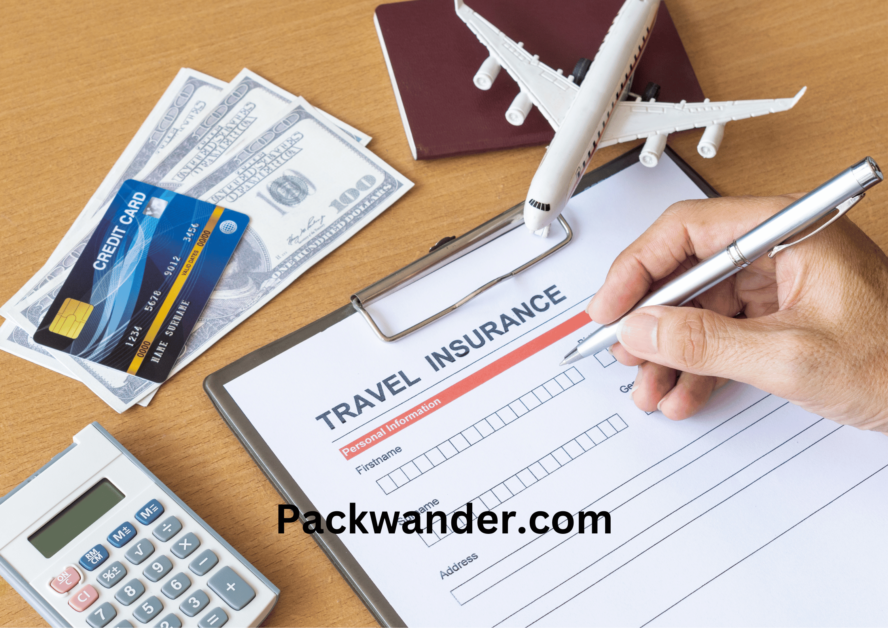
Travel insurance is a crucial component of any trip, providing financial protection and peace of mind in case of unforeseen events. Whether you’re traveling domestically or internationally, here are some reasons why travel insurance is essential for every journey:
1. Benefits of travel insurance coverage:
- Trip Cancellation and Interruption: Travel plans can change unexpectedly due to various reasons, such as illness, accidents, or unforeseen emergencies. Travel insurance can cover the cost of non-refundable expenses if you need to cancel or cut short your trip.
- Medical Expenses: In case of illness or injury while traveling, medical expenses can quickly add up. Travel insurance can cover hospitalization, medical treatments, and emergency medical evacuation, ensuring you receive the necessary care without financial burden.
- Lost or Delayed Baggage: Travel insurance can provide compensation for lost, stolen, or delayed baggage, helping you replace essential items and clothing during your trip.
- Flight and Travel Delay: If your flights are delayed or you experience travel disruptions, travel insurance can cover additional expenses, such as accommodation and meals.
- Emergency Assistance Services: Many travel insurance plans offer 24/7 emergency assistance services, providing support and guidance during emergencies, such as contacting family members or arranging medical care.
2. Types of travel insurance to consider:
- Single Trip Insurance: Designed for individual trips, single trip insurance provides coverage for the duration of a specific journey.
- Annual/Multi-Trip Insurance: If you travel frequently, an annual or multi-trip insurance policy can be more cost-effective, as it covers multiple trips within a specified period.
- Medical Evacuation Insurance: This specialized coverage ensures that you receive proper medical care and evacuation to your home country in case of serious medical emergencies.
- Adventure Sports Coverage: If you plan to participate in adventure activities such as skiing or scuba diving, consider a policy that includes coverage for these activities.
3. Choosing the right policy for your trip:
- Assess Your Needs: Consider the nature of your trip, the destinations, and the activities you plan to engage in. Assess your potential risks and choose a policy that best meets your needs.
- Read the Fine Print: Carefully read the policy’s terms and conditions, including coverage limits, exclusions, and claim procedures. Ensure the policy covers what you need and provides sufficient coverage.
- Compare Multiple Quotes: Obtain quotes from different insurance providers to compare prices and coverage options. Choose a policy that offers the best value for your money.
- Purchase Early: Purchase travel insurance as soon as you book your trip to ensure you’re covered for any unforeseen events that may arise before your departure.
Travel insurance is an investment in your safety and financial protection during your journey. While you hope for the best, having the right coverage can save you from significant expenses and stress if the unexpected happens. Travel with confidence, knowing that you are prepared for whatever comes your way with the right travel insurance policy.
Airport Shopping and Duty-Free Deals

Airports have evolved into more than just transportation hubs; they now offer a wide range of shopping options, making it a delightful experience for travelers. Here’s how you can make the most of airport shopping and duty-free deals:
1. Exploring shopping options at airports:
- Duty-Free Shops: Duty-free shops are a highlight of airport shopping, offering tax-free prices on various products. These shops are located after security, typically in the international departures area.
- Luxury Brands and Boutiques: Airports often feature luxury brand stores and boutiques, offering designer fashion, accessories, and cosmetics.
- Electronics and Gadgets: Many airports have electronics stores with the latest gadgets and tech accessories, making it convenient for tech-savvy travelers.
- Local and Souvenir Shops: Explore shops that offer local products and souvenirs, providing an opportunity to take home unique mementos from your destination.
2. Tips for duty-free shopping savings:
- Know Your Allowances: Be aware of the duty-free allowances for your destination country to avoid exceeding import limits and incurring duties upon arrival.
- Compare Prices: While duty-free prices can be attractive, it’s a good idea to compare them with regular retail prices to ensure you’re getting a genuine deal.
- Consider Bulk Purchases: Some items, such as alcohol and tobacco, may offer better savings when bought in larger quantities, so consider sharing purchases with fellow travelers if allowed.
- Join Frequent Shopper Programs: Some airports have loyalty programs that offer discounts, points, or benefits for frequent shoppers.
3. Items to consider buying at the airport:
- Alcohol and Tobacco: These items are often significantly cheaper at duty-free shops than in regular retail stores.
- Fragrances and Cosmetics: Duty-free shops offer an array of perfumes, colognes, and cosmetics at competitive prices.
- Electronics and Accessories: If you’re looking for the latest tech gadgets or accessories, airports can be a convenient place to shop.
- Local Products and Souvenirs: Pick up unique local products or souvenirs to remember your trip and share with friends and family back home.
- Travel Essentials: If you forgot any travel essentials like chargers, adapters, or travel-sized toiletries, airport stores can save the day.
4. Stay Mindful of Your Carry-On Restrictions:
- Remember to consider your carry-on restrictions and regulations when making purchases at the airport. Liquids, gels, and certain items may have specific limitations for carry-on baggage.
Airport shopping can be a fun and rewarding part of your travel experience. From duty-free bargains to luxury finds, take advantage of the shopping options available to make your journey even more enjoyable and memorable. Just be sure to shop wisely, stay within your allowances, and consider the practicality of your purchases for your trip.
Photography Tips for Capturing Amazing Aerial Shots

Aerial photography provides a unique perspective of the world from above, showcasing stunning landscapes and cityscapes. Here are some tips to help you capture amazing aerial shots during your flight:
1. Best camera settings for in-flight photography:
- Shutter Speed: Use a fast shutter speed to freeze the motion of the aircraft and avoid blurriness. A speed of at least 1/500th of a second is recommended.
- Aperture: Choose a small aperture (higher f-number) to ensure a wide depth of field, keeping both near and distant objects in focus.
- ISO: Keep the ISO as low as possible to reduce noise and maintain image quality. ISO 100 or 200 is ideal for most daylight flights.
- White Balance: Set the white balance to auto or choose the appropriate preset for the lighting conditions to achieve accurate colors.
- Focus Mode: Use continuous autofocus (AF-C) to track moving subjects, such as clouds or other aircraft.
2. Overcoming challenges of shooting through airplane windows:
- Clean the Window: Wipe down the airplane window to remove any smudges or fingerprints that could impact the clarity of your shots.
- Avoid Reflections: Position your camera lens as close to the window as possible to minimize reflections. Use a lens hood to further reduce unwanted glare.
- Avoid Flash: Turn off the camera flash, as it will only reflect off the window and won’t illuminate the scene outside.
- Shoot with Wide-angle Lenses: Wide-angle lenses are better suited for aerial photography, as they allow you to capture more of the expansive landscape.
3. Composing stunning aerial photographs:
- Rule of Thirds: Use the rule of thirds to create a balanced and visually appealing composition. Place key elements of the scene along the gridlines or at their intersections.
- Leading Lines: Look for natural lines or patterns that lead the viewer’s eyes into the frame, such as rivers, roads, or mountain ridges.
- Foreground Interest: Include a compelling foreground element to add depth and create a sense of scale in your aerial shots.
- Symmetry and Reflections: Aerial photography often presents symmetrical patterns and reflections, which can result in captivating images.
- Experiment with Angles: Take advantage of the aerial perspective to experiment with unique angles and viewpoints, creating visually interesting images.
- Capture Changing Light: Aerial views offer changing light conditions, especially during sunrise and sunset. Be ready to capture the magical golden hour moments.
4. Respect Airplane Rules and Safety:
- Always follow airline rules and regulations regarding photography during the flight. Be mindful of crew instructions and avoid using photography equipment during critical phases of flight.
By applying these tips, you can capture breathtaking aerial shots that showcase the beauty of the world from above. Enjoy your photography journey and embrace the wonders of aerial photography during your flights!
Conclusion:
Traveling by plane can be an exhilarating experience, especially for first-time flyers and solo travelers. In this guide, we have covered essential tips and advice to help you navigate your journey with ease and confidence. Let’s recap the key points that will make your travel by plane a smooth and enjoyable adventure:
- Planning and Preparation: Start by booking your flight tickets well in advance and choose the right airline that suits your needs. Pay attention to baggage policies and make sure you have all the necessary travel documents before heading to the airport.
- Airport Etiquette: Arrive at the airport early to avoid rushing and give yourself enough time for check-in, security checks, and finding your boarding gate. Follow airport guidelines and regulations to ensure a hassle-free experience.
- Overcoming Anxiety: First-time flying anxiety is entirely normal, and many travelers experience it. Remember to breathe, practice relaxation techniques, and distract yourself with entertainment during the flight. You’ll find that flying becomes more comfortable with each journey.
- Solo Travel Tips: If you’re flying alone for the first time or embarking on an international adventure, research your destination, understand the local customs, and prioritize your safety. Embrace the thrill of exploring new places on your terms, and you’ll discover the rewards of solo travel.
- In-Flight Comfort: Make the most of your flight by choosing comfortable seating, staying hydrated, and getting some rest. Use in-flight entertainment to pass the time and make the journey more enjoyable.
- Embracing the Journey: Traveling by plane opens up a world of opportunities to explore new destinations, experience different cultures, and create lifelong memories. Embrace the adventure, step out of your comfort zone, and savor every moment of your journey.
With these tips and advice in mind, we encourage you to embark on your travel adventures with confidence. The world is full of wonders waiting to be explored, and every journey by plane brings you closer to new experiences and personal growth. Whether you’re a first-time flyer or a seasoned solo traveler, remember that each flight is a step towards broadening your horizons and enriching your life.

